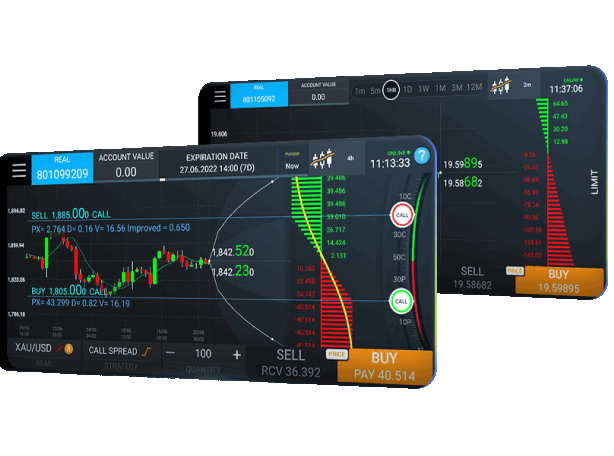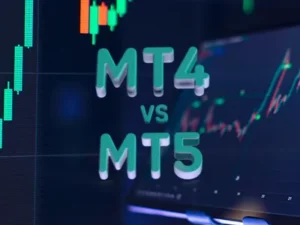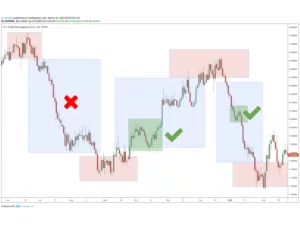To trade forex effectively, you must understand the basic terms used on trading platforms. These words describe how trades are measured, priced, and managed. Pips, spreads, leverage, and margin are part of every trade you place — they affect your costs, risk, and potential profits. Knowing how these work helps you avoid confusion and make informed decisions.
Learning these terms before trading real money is essential. If you know how to calculate pip value, you can set stop-loss levels accurately. Understanding spreads tells you how much you pay per trade, while margin and leverage show how much capital you control. Mastering these basics is the first step toward trading with confidence and control.
What Is a Pip in Forex?
A pip (short for “percentage in point”) measures the smallest price change in most currency pairs. It usually equals 0.0001 for pairs like EUR/USD. If EUR/USD moves from 1.1000 to 1.1005, that’s a 5-pip increase.
| Pair | Price Change | Pips Gained | Profit (1 Lot) |
|---|---|---|---|
| EUR/USD | 1.1000 → 1.1010 | +10 | $100 |
| USD/JPY | 110.00 → 110.10 | +10 | ¥1,000 |
A pip helps measure price movement and makes it easier to track performance in every trade. Understanding pip value also helps with position sizing and risk control. For micro accounts, each pip is worth $0.10; for mini lots, $1; and for standard lots, $10. The more you know about pip calculation, the better you can plan entries, manage stop losses, and estimate potential profits accurately.

Understanding the Spread
The spread is the difference between the bid (sell) and ask (buy) price. It’s how brokers earn money when you trade. Tight spreads reduce your cost per trade, making it easier to profit. If EUR/USD = 1.1000 / 1.1002 → Spread = 2 pips. Lower spreads are ideal for scalping or short-term trades.
- Major pairs like EUR/USD usually have spreads under 1 pip.
- Exotic pairs (e.g., USD/TRY) have wider spreads, sometimes 10 pips or more.
Always compare spreads between brokers before opening an account.
Understanding Leverage in Forex Trading
Leverage allows traders to control larger trade sizes with smaller amounts of capital. For instance, with 1:100 leverage, a $100 deposit can open a $10,000 position. This magnifies both potential gains and possible losses, depending on how the market moves. High leverage gives flexibility but also demands strict risk management and awareness of margin levels.
| Leverage | Deposit | Position Size | Risk |
|---|---|---|---|
| 1:50 | $100 | $5,000 | Moderate |
| 1:200 | $100 | $20,000 | High |
Controlling leverage carefully helps traders avoid sudden account losses during volatile conditions. New traders are advised to use lower ratios like 1:20–1:50 until they gain more experience and develop a consistent trading approach. Managing leverage wisely keeps your balance stable and allows for long-term growth instead of short-term gambling.
What Is Margin?
Margin is a portion of your account balance that your broker will lock as insurance when entering a trade. It acts like a security deposit, which proves you have sufficient funds to cover the position you are trading. With higher leverage, less margin is required to take up the same trade size. That is how traders can control big positions with relatively small deposits, making Forex so attractive for beginners with limited capital.
With 1:100 leverage, if you open a trade for $10,000, it would require just $100 in margin. Your broker holds that amount while your position is open. If the market moves against you and your balance goes toward the margin limit, you will face a margin call-that is a message saying that your available funds are too low to keep the trade open. At this moment, the broker has the right to automatically close the position and cut further losses.
A healthy margin level is important in terms of account safety. Experienced traders suggest that when the market is so volatile, free margin above 50% or even higher would be a good measure. Monitoring margin percentage and equity helps prevent forced closures of trade positions and gives you enough room to manage open positions effectively. Calculate the margin before placing trades to make sure you have sufficient funds for additional positions and unexpected market movements.
How Pips, Spread, Leverage, and Margin Work Together
All four elements are linked and directly affect every trade in Forex. Pips measure how much the price moves between entry and exit. Spread represents the cost of opening a position, which is the difference between the buy and sell price. Leverage increases trading exposure by allowing control over larger positions with a smaller deposit. Margin is the portion of account funds used to keep a trade open and maintain that level of exposure.
You open a EUR/USD position at 1.1000 using 1:100 leverage with a $100 deposit. If the price moves up by 50 pips, the gain equals $50, or half of the deposited amount. If it drops by 50 pips, the loss equals $50 — a 50% drawdown. Such movements show how quickly profits or losses can build up when leverage is used. Proper control of position size and risk is essential to avoid losing capital too fast. Even experienced traders limit their exposure by setting stop-loss levels and using moderate leverage ratios.
- Using excessive leverage on small balances
- Ignoring spreads during low market activity
- Misjudging pip value and trade size
- Trading without a clear stop-loss
- Failing to limit total daily or weekly risk

Avoid these mistakes by learning how costs, pip movement, and margin requirements affect results. Start with small trades to understand how market movement impacts the account balance. Consistent observation and risk control help develop stable habits that protect the account over time.
Forex Profit and Cost Calculation
Before trading, it’s important to understand how profit, spread, and margin work in Forex. Every trade involves calculating how much a price move (measured in pips) can earn or cost you. Knowing these details helps you plan better and avoid unexpected results. Beginners often overlook how small price movements can quickly affect their balance, especially when using high leverage.
| Item | Example | Result |
|---|---|---|
| Pair | EUR/USD | 1.1000 → 1.1020 |
| Movement | 20 pips | $20 profit (mini lot) |
| Spread | 1 pip | $1 cost |
| Margin Used | $100 (1:100) | 1% of position |
Understanding these numbers helps you manage trades without surprises. The table shows how a small price change can result in a real profit or loss, depending on your lot size and leverage. Always consider the spread and margin when calculating your position, as they directly influence your final earnings. Practicing such calculations helps traders control risk and build better trading discipline.
FAQs
How much is 1 pip worth in forex?
It depends on lot size. One standard lot = $10 per pip, mini = $1, micro = $0.10.



